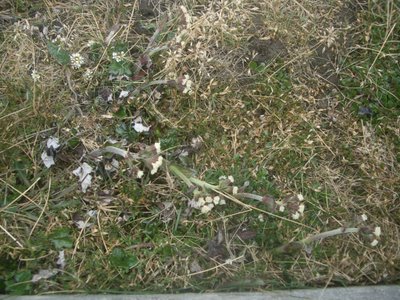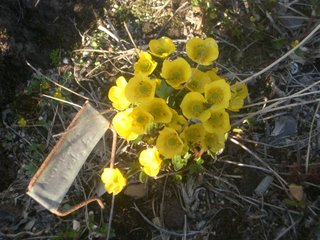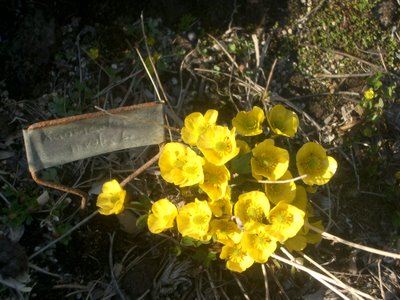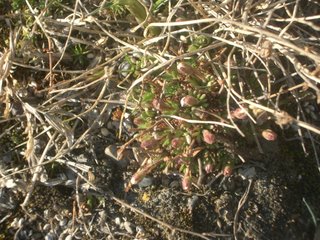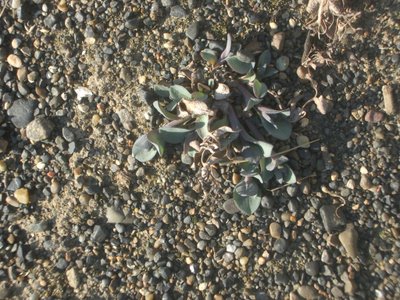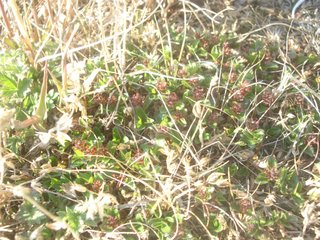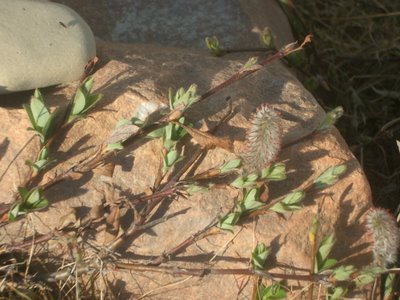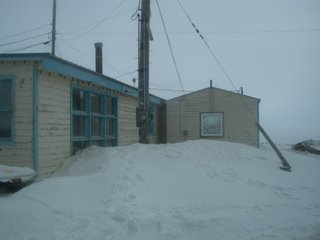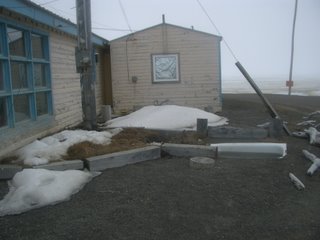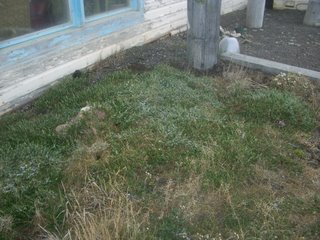 The garden was well-sprinkled with white. The willow leaves held the snow, so that most of the garden was frosted with white crystals. It was really quite lovely, although the fact that I was going to be spending a rather cold day in the field, with students (some of whom were probably under-dressed and would therefore require watching for hypothermia) got in the way of true appreciation of the aesthetics of the situation.
The garden was well-sprinkled with white. The willow leaves held the snow, so that most of the garden was frosted with white crystals. It was really quite lovely, although the fact that I was going to be spending a rather cold day in the field, with students (some of whom were probably under-dressed and would therefore require watching for hypothermia) got in the way of true appreciation of the aesthetics of the situation.
Ironically, the garden was just really getting going on blooming at that point. The Arctic Cinquefoil (Potentilla hypartica) was in full bloom,

and the Heart-leaved or Chordate-Leaved Saxifrage (Saxifraga punctata L.) was in fine shape. This is the Nelsoniana subspecies, one of 5 rather differing subspecies which occur in Alaska, according to Hulten. It is, however, the only one of them seen near Barrow.

Even the Lousewort (Pedicularis sp.--I'm still trying to verify species, Langsdorffi, Kanei or sudetica) was starting to bloom.
Of course, by that evening, when I got in at quarter to seven, the sun was out, the snow was gone, and the garden was blooming. You can see a hot cap in the left mid-ground. It is on the River Beauties, as I decided that I would get them to bloom in Barrow if it could be done. More on them later.

